| Zipper Machine on I-95 James River Bridge Project |
Zipper Machine on I-95 James River Bridge Project
These photos show the Zipper Machine in action on May 3, 2001. The machine is in the process of moving the temporary concrete median barrier over one lane. This is done to close one half of the bridge so that deck replacement operations can take place on the closed half, while one lane each way with a center emergency lane operates on the other half. The closure begins at 7:00 PM and ends at 6:00 AM the following morning, occurring Monday through Friday.
You may wonder how I got such a great view looking down on this operation. The James Monroe state office building is right next to I-95 in downtown Richmond, and I am standing at the edge of the plaza that surrounds the building. The building is 25 stories tall.
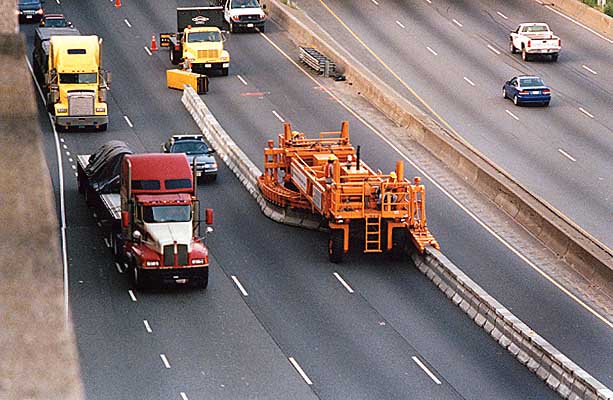
The "Zipper Machine" is rather impressive; it's
a huge truck-like device that lifts the movable concrete median barrier about
6 inches off of the roadway, shifts it over, and then places it back down onto
the roadway.
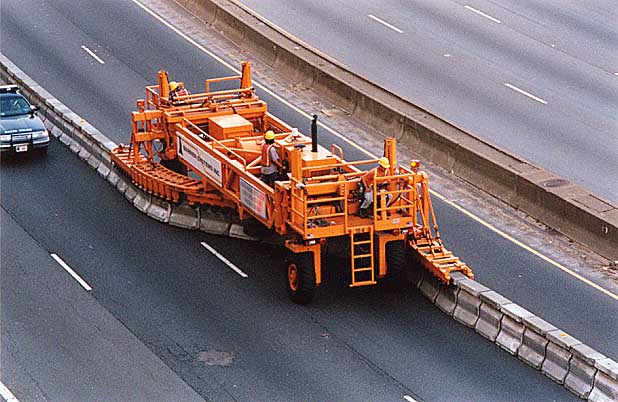
The barrier is comprised of segments about 5 feet
long, with strong interlocking steel brackets that hold the segments of the barrier
together, so that it can "flow" through the Zipper Machine as well as have linear
connectivity if a motor vehicle collides with it. Jersey-type median barriers
weigh 500 pounds per linear foot or more, so it takes a large powerful machine
to perform this task, and it moves at 3 to 4 miles per hour.
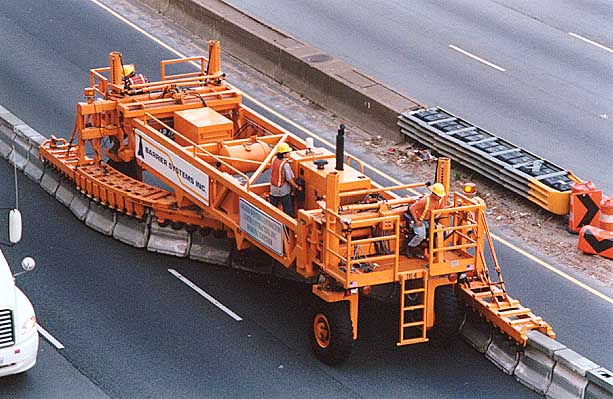
There is over a mile of movable barrier on the
project, and it took about 20 minutes to move the entire barrier. Actually it
takes two passes to do this, twice moving the barrier over by one lane; in other
words, the barrier needs to be moved two lanes in all at the daily start of work,
and then back two lanes at the daily end of work. The movable barrier is "parked"
right next to the permanent highway median barrier when the bridge has its full
6 lanes open to traffic.
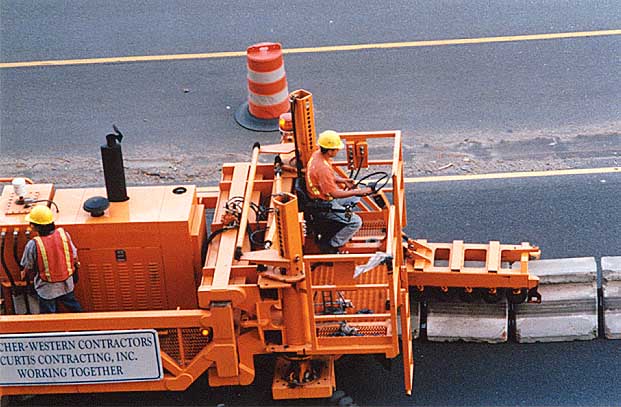
It's all visible in the photo if one looks closely.
Each barrier segment has a two-sided flange at the top, and the "zipper channel"
has two tracks of closely-spaced small wheels that the flanges roll over. While
it moves slowly, it will move a mile of barrier in 20 minutes, which would take
a crew of four all day to move and expose all of them to the traffic while placing
the barriers. That would involve a small truck crane to lift and replace the barrier
segments one at a time, and a means to detach and reattach the interlocking steel
brackets that hold the segments of the barrier together. The Zipper Machine does
it far more efficiently.
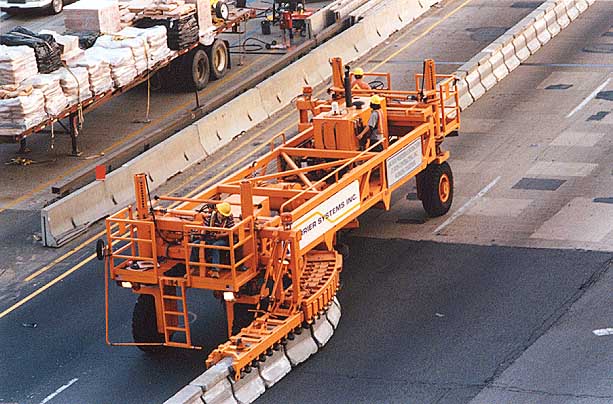
Both front and rear wheel trucks are steerable,
and you can see a steering wheel and steering crewman at each end of the machine.
The Zipper Machine is actually a quite large vehicle, when seen up close. It takes a tremendous amount of power to move a heavy concrete median barrier, and to do it as quickly as this machine does it. It is fairly quiet when in operation, though. The motor is not loud, and the lowering of the barrier segments back down to the roadway provides a quiet 'plunk-plunk-plunk' sound that is not very noticeable even when you are standing under the bridge when the machine passes across the deck overhead.
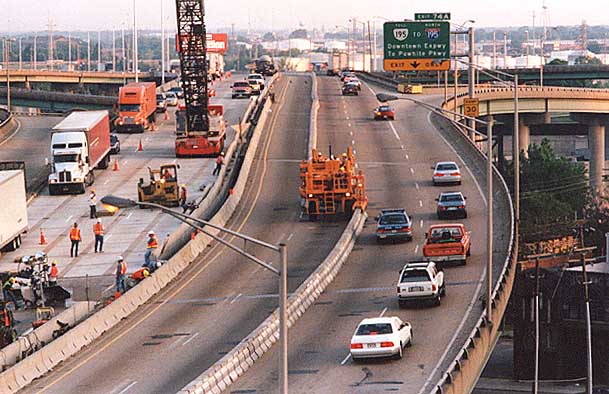
As you can see, each side of the bridge (actually
two separate bridges that are about two feet apart) has been restricted to one
lane each way as the temporary concrete median barrier is being shifted over.
Construction workers, trucks, machinery and a large truck crane are already moving
into place to begin work on another section of bridge deck replacement on the
northbound side. The lighter-toned deck is the portion that has already been replaced.
Lead article for I-95 James River Bridge Reconstruction
Copyright © 2001-2003 by Scott Kozel. All rights reserved. Reproduction, reuse, or distribution without permission is prohibited.
By Scott M. Kozel,
Roads to the Future(Created 6-23-2001, updated 5-3-2003)